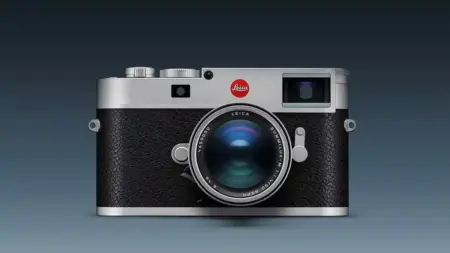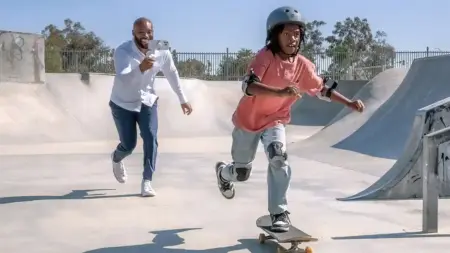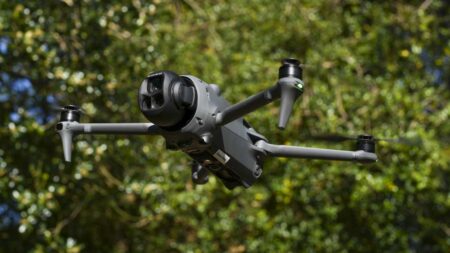Before making any Canon EOS R6 Mark II vs R6 comparison, it’s important to understand how novel the original R6 was when it launched and the place it occupies in the market.
When Canon debuted the EOS R6 back in 2020, it launched somewhat under the shadow of its sibling, the EOS R5. But while the 45MP, 8K-capable Canon EOS R5 grabbed all the headlines, it was the 20MP Canon EOS R6 that was destined to sell in bigger numbers.
This is because the R6 was the perfect combination of the speed of the popular Canon EOS 7D Mark II with the full-frame sensor appeal of the Canon EOS 6D Mark II in a mirrorless body. It was the everyman’s and everywoman’s camera. The perfect package.
And now, two years on, Canon has unveiled a replacement in the form of the EOS R6 Mark II which is anything but the light refreshes we tend to see sometimes these days. With a 20% boost in resolution and a bigger jump in continuous shooting speed, the EOS R6 Mark II is a beast of a camera. But should R6 users upgrade? Find out in our Canon EOS R6 Mark II vs R6 comparison.
- Best Canon cameras you can buy today
- Which Canon EOS R camera should you buy?
Sensor
Canon EOS R6 Mark II: 24.2MP Full-frame Dual Pixel CMOS AF II
Canon EOS R6: 20Mp Full-frame Dual Pixel CMOS AF II
Both cameras offer a full-frame sensor, neither of which is stacked or backside-illuminated. However, with the EOS R6 Mark II Canon tweaked the sensor design, giving it a 20% boost in resolution with a jump to a 24.2-million-pixel chip.
To some, this jump in pixel count may not sound like much, but 24.2MP is a popular resolution with many photographers. This is because it provides enough resolution for fine details but can still control noise well.
The original EOS R6 was arguably the one Canon mirrorless camera that motivated the most DSLR users to make the switch, and it’s still a fantastic camera. But we have to give the edge to the new R6 Mark II with its new sensor and extra resolution.
Processor
Canon EOS R6 Mark II: Digic X
Canon EOS R6: Digic X
Both cameras retain Canon’s latest processing engine, the DIGIC X, which also sits in the flagship EOS R3 and EOS R5 cameras. As we’ll see below, the sensor and processor combination in the EOS R6 Mark II enable it to shoot at much faster speeds, and that’s certainly something to take into consideration if you shoot wildlife and sport. But looking solely at the image processor, this a wash, as both models use the same engine.

Autofocus
Canon EOS R6 Mark II: Dual Pixel CMOS AF II phase detection with 100% coverage
Canon EOS R6: Dual Pixel CMOS AF II phase detection with 6,072 points in stills and 4968 points in movie mode
The AF system in the original R6 is simply fabulous, and it’s one of the best cameras for stills photography because of it. Like the Canon EOS R5 that was launched on the same day, the R6 has Canon’s Dual Pixel CMOS AF II sensor, which means there’s phase-detection autofocusing available when you’re shooting both stills and video. At the time, it boasted a record for AF speed at 0.05sec.
What’s more, the whole sensor is covered with AF points, totalling 6,072. That’s a lot of points to choose from! Plus, it offers the ever-popular Eye AF and subject detection modes.
The EOS R6 Mark II inherits Dual Pixel CMOS AF II and all the same innovative technology, with some new tweaks. Canon says it has improved the camera’s deep learning algorithm, and eye-detection works in any focus mode or focus area. You can even specify whether you want to prioritise the left or right, and when eyes can’t be detected, the camera will prioritise on keeping the subject’s face in focus. If the face isn’t detectable, the camera then prioritises their body.
Also new is a Face-only AF option that tells the camera not to re-focus on the background when your subject leaves the frame. That way when they re-enter the frame, the camera begins tracking them again.
There are also three different sized Zone AF options and ‘planes and trains are added to the list of detectable subjects in the ‘Vehicle’ section, while horses (and zebras) are added to the ‘Animal’ list. That makes the complete list: Humans, Animals (Dogs, Cats, Birds and horses), Vehicles (Racing cars or Motor bikes, Aircraft and Trains). There’s also a new ‘Auto’ subject detection mode in which the camera will look for any of the subjects in its detection list.
We called the EOS R6’s AF system ‘astonishingly good’ in our original review, but as the EOS R6 Mark II builds on this, we’ll give it a slight edge.
Continuous Shooting
Canon EOS R6 Mark II: Mechanical shutter: 12fps for 1000+ Jpeg or 110 raw or 1000 CRAW images, Electronic shutter: 40fps for 190 Jpeg or 75 raw or 140 CRAW images, or 20fps, 5fps all with AF tracking
Canon EOS R6: Mechanical shutter at 12fps or electronic shutter at 20fps for up to 240 RAW files or 1000+ Jpegs
This is where we start to see some significant differences in our Canon EOS R6 Mark II vs R6 comparison. Both cameras maintain a burst rate of 12fps with the mechanical shutter, but with the electronic shutter the EOS R6 Mark II can shoot at double the speed. The jump from 20fps to 40fps in the Canon EOS R6 vs R6 Mark II opens up all sorts of new creative possibilities. You should never miss a moment with speeds like that.
This is a significant improvement and is a real reason to consider an upgrade if you shoot action or wildlife. The boost in continuous shooting speed vaults the EOS R6 Mark II even above the APS-C speed demon, the Canon EOS R7, launched earlier this year (check out our guide to the Best APS-C cameras).
With its mechanical shutter, the R7 can shoot 15fps for up to 224 Jpegs or 51 raw files, and with its electronic shutter it can shoot 30fps for 126 Jpegs or 42 raw files. Like the R7, the R6 II has a Raw Burst mode in which it can shoot up to 191 raw files at 30fps (with AF tracking) with pre-capture of the images 0.5 second before th shutter button is pressed. That’s ideal for unpredictable action
If you have a need for speed, the EOS R6 Mark II is the best Canon camera for the job.
Video
Canon EOS R6 Mark II: 4K (3840 x 2160) up to 60fps, Full HD (1920 x 1090) at up to 120fps
Canon EOS R6: 4K video at up to 60fps, Full HD at up to 120fps. 4K video crop: 1.07x at 25p (1.19x with the Digital IS on), 1.52x at 60p
We also see some big improvements in video when comparing the Canon EOS R6 Mark II vs R6. The original R6 can record 4K video at 60fps, which is highly desirable, but there’s a 1.52x crop applied. With the EOS R6 Mark II, this crop is no more. The new camera can shoot 4K at 60p using the full-width of the sensor. What’s more, all the 4K footage from the EOS R6 Mark II is oversampled from 6K footage, meaning image quality is much improved.
Another key upgrade comes in the recording limit. With the original R6 you were limited to 25 min 59 second recordings. Canon says it has improved the camera’s circuit design in the R6 Mark II and you can now record more than 40 minutes of oversampled footage in 4K at 60p or for up six hours in 4K at 30p.
And if you have an Atomos Ninja V+, you can output 6K raw video via the R6 Mark II’s HDMI port. EOS R6 Mark II users will also benefit from a new False colour option that uses 6 colours to indicate the brightness of elements of the scene. There’s also support for HDR via PQ and Canon Log 3.
The EOS R6 Mark II demonstrates a clear advantage over its predecessor when it comes to video.
Stabilisation
Canon EOS R6 Mark II: In-body image stabilisation (IBIS) that works with lens IS and enables up to 8-stops of shutter speed compensation
Canon EOS R6: In-body image stabilisation (IBIS) that works with lens IS and enables up to 8-stops of shutter speed compensation
The original R6’s in-body image stabilisation is very capable and rated at 8-stops, but Canon claims that the R6 Mark II has the world’s most effective stabilisation performance and again it comes with a claimed shutter speed compensation of 8-stops.
There may be some nuanced differences in performance between the two cameras’ IBIS, but we found the system in the original R6 to be extremely capable. We’ll call this one even.
Viewfinder & Screen
Canon EOS R6 Mark II: 0.5-inch 3.69million-dot OLED electronic viewfinder with 120fps refresh rate
Canon EOS R6: 0.5-inch 3.69million-dot OLED electronic viewfinder with 120fps refresh rate
Canon EOS R6 Mark II: 3-inch 1.62-million dot vari-angle touchscreen
Canon EOS R6: 3-inch 1.62-million dot vari-angle touchscreen
Canon has stuck with the same viewfinder and screen that were on the original R6. This makes sense. All of Canon’s recent mirrorless cameras offer excellent touch control, and the on-screen controls work seamlessly with the cameras’ buttons and dials. Having a fully articulated screen also opens up all sorts of creative possibilities, from shooting at unusual angles to filming yourself speaking.
Some may have wanted Canon to include the EOS R5’s 5.76-million-dot viewfinder on the EOS R6 Mark II, bu the 3.69-million-dot screen is perfectly bright and provides plenty of detail.
Storage
Canon EOS R6 Mark II: Dual slots, 2x SDXC UHS-II
Canon EOS R6: Dual slots, 2x SDXC UHS-II
Again, no change here when comparing memory storage on the Canon EOS R6 Mark II vs R6. Canon has stuck with the dual SD card slots. Some people may have been looking for a CFexpress card slot, which might have been useful for the longer video recording times that are now possible, but not this time.
Size and weight
Canon EOS R6 Mark II: 138.4 x 98.4 x 88.4mm; 588g / 670 g with card and battery
Canon EOS R6: 138.4 x 97.5 x 88.4mm; 598g / 680 g with card and battery
There’s not a lot of change here, either. The EOS R6 Mark II is ever so slightly bigger in dimensions than the original R6, yet it’s also ever so slightly lighter. If size and weight is a determining factor for you, the differences here are likely so minuscule that you wouldn’t notice in your day-to-day photography.
Should I sell my Canon EOS R6?
The original Canon EOS R6, for many, was the mirrorless camera they’d been waiting for. It was extremely popular and motivated many Canon and other DSLR users to finally make the jump to a mirrorless camera. But it had its niggling issues. That 1.52x crop on 4K video, for one. So was the short recording limit. Heat issues when filming was another.
With the EOS R6 Mark II, Canon has addressed those concerns and gone a step further, providing 4K footage oversampled from the sensor’s 6K output and a longer recording time.
And let’s talk about that sensor. It may not look like much on paper, but the extra 4 megapixels is a 20% jump in resolution and brings it to a pixel count that balances noise control with capturing those important fine details. Add in some improvements to an already sterling AF system, and the EOS R6 Mark II looks like a really significant upgrade.
If you’re an R6 user and have the concerns about the camera we highlighted above, the R6 Mark II addresses all of those. For anyone else, it’s hard to find any other camera on the market for enthusiasts that looks quite like the perfect package that R6 Mark II does.
Sponsored: Thinking of selling your Canon EOS R6 or another mirrorless camera DSLR to upgrade? Get a free instant quote from MPB and find out what your kit is worth. Selling your gear to MPB is easy and secure. Plus get free doorstep pickup and super-fast payment. We’re loved and trusted by more than 250,000 visual storytellers around the world and we’re rated excellent with five stars on Trustpilot. Buy. Sell. Trade. Create.




Leave a Reply